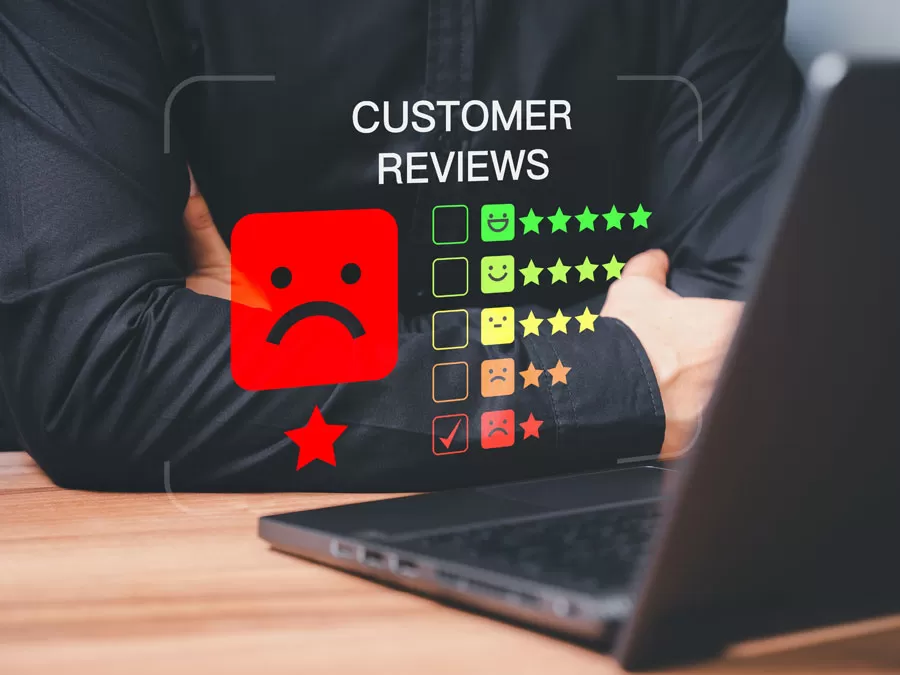As customer expectations continue to evolve, businesses must constantly evaluate and upgrade their customer experience strategies to stay ahead of the curve.
With the right customer experience strategy, you can show your customers how much you value them. Positive reviews and impressions from these satisfied consumers elevate your brand’s reputation in an authentic, high-trust way.
At some point, you will need to adjust your customer care strategy. They may have outgrown your digital marketing tactics, or there may be an entirely new consumer mindset that you still need to consider. There may also be other causes outside of your control.
Nothing is constant in customer experience. Customer needs, products, and consumer trends will always change, and so should your strategies, tools, and approach.
So, it’s best to evaluate your processes and goals to determine if they need to be updated.
This blog explores signs that indicate the need for an upgrade in your customer experience strategy. By addressing these signs and embracing the latest customer service trends, B2B customer service strategies, and customer experience trends, you can elevate your customer interactions, boost brand reputation, and achieve sustainable growth.
The Importance of Customer Experience
Customer experience is no longer just a buzzword; it’s now a strategic differentiator that can make or break a business. In today’s hyper-connected world, customers have high expectations for seamless interactions across various touchpoints.
Nothing is constant in customer experience. Customer needs, products, and consumer trends will always change, and so should your strategies, tools, and approach.
A robust customer experience strategy enables businesses to meet and exceed these expectations, leading to increased customer satisfaction, loyalty, and advocacy.
Moreover, studies have shown that organizations with a strong customer experience focus outperform their competitors in terms of revenue growth and market share.
To ensure your customer experience strategy remains effective, it’s essential to stay informed about the latest customer service trends and customer experience trends. By understanding and leveraging these trends, businesses can proactively adapt to changing customer needs and preferences, providing innovative and personalized experiences that resonate with their target audience.
Assessing Your Current Customer Experience Strategy
Regularly evaluating and measuring the effectiveness of your customer experience strategy is crucial for identifying areas that require improvement. To determine whether your strategy needs an upgrade, consider the following questions:
- Are customer satisfaction scores declining, or are you experiencing increased churn rates?
- Are you struggling to provide personalized and customized experiences to your customers?
- Do you have inefficient or outdated customer service processes that hinder seamless interactions?
- Are you falling behind in incorporating emerging customer experience trends?
Answering these questions will help you assess the health of your current strategy and identify potential gaps or areas for improvement.
When Should You Update Your Customer Experience Strategy?
Let’s explore each sign in more detail to understand why they indicate the need for an upgrade and how you can address them effectively.
-
Declining Customer Satisfaction and Increased Churn Rate
Declining customer satisfaction and high churn rates are clear indicators that your current customer experience strategy may need an upgrade. These signs suggest that customers are not receiving the level of service or experience they expect, leading to dissatisfaction and attrition.
To address this, it’s crucial to collect and analyze customer feedback to understand their pain points and areas of improvement. Use this data to identify patterns and trends, enabling you to make informed decisions to enhance the customer experience.
The most effective way to gauge customer satisfaction is by using metrics. Here are some your business should look for:
-
Customer satisfaction score (CSAT)
CSAT is a widely used metric that measures customer satisfaction based on direct feedback. It allows businesses to assess customer sentiment, align their B2B customer service strategy with current trends, and address areas of improvement.
-
Net Promoter Score (NPS)
NPS measures customer loyalty and advocacy, which are crucial elements of a successful B2B customer service strategy. By monitoring NPS, businesses can identify brand promoters, understand their needs, and leverage their influence to attract new customers.
-
Customer Effort Score (CES)
CES focuses on minimizing customer effort and optimizing the customer journey. This metric aligns with the current customer experience trends that emphasize streamlined and frictionless interactions between businesses and their B2B customers.
-
Customer Retention Rate
Maintaining a high customer retention rate is essential for a successful B2B customer service strategy. Businesses need to prioritize customer satisfaction, adapt to changing trends, and deliver exceptional experiences to retain valuable B2B customers.
-
Churn Rate
Churn rate analysis helps identify areas of concern in customer experience trends. By monitoring and minimizing churn rates, businesses can optimize their B2B customer service strategy and retain valuable customers, reducing the need for constant customer acquisition.
-
First contact resolution (FCR)
FCR is a critical metric for businesses aiming to enhance their B2B customer service strategy. Resolving customer issues promptly and effectively reflects current customer service trends, which emphasize efficiency and personalized support.
-
Average Response Time
Keeping up with customer service trends requires businesses to prioritize timely responses. Monitoring average response time allows organizations to address B2B customer queries and issues promptly, enhancing the overall customer experience.
-
Online Reviews and Ratings
Online reviews and ratings provide valuable insights into customer satisfaction and emerging customer experience trends. Monitoring and responding to feedback helps businesses gauge sentiment, make necessary adjustments, and demonstrate their commitment to customer service excellence.
-
Customer Surveys and Feedback
Engaging customers through surveys and feedback allows businesses to gather firsthand insights on customer satisfaction. Analyzing this feedback helps shape B2B customer service strategies, aligning them with current trends and meeting evolving customer expectations.
-
Customer lifetime value (CLV)
CLV analysis helps businesses assess the long-term value of B2B customers and adapt their customer service strategies accordingly. By focusing on enhancing CLV, organizations can build strong and sustainable relationships, aligning with customer experience trends and maximizing customer loyalty.
One way to address declining satisfaction and churn is by adopting a customer-centric approach. By placing customers at the center of your strategy, you can tailor experiences to their needs and preferences. Embrace customer service trends that emphasize personalization, proactive support, and multichannel engagement.
Leverage technology and data analytics to gain insights into customer behaviors, preferences, and sentiment, allowing you to deliver personalized experiences that foster loyalty and retention.
-
-
Lack of Personalization and Customization
In today’s digital age, customers expect personalized and customized experiences tailored to their unique preferences. If your current customer experience strategy lacks personalization and customization, it may be time for an upgrade. Generic interactions and one-size-fits-all approaches can leave customers feeling disconnected and undervalued.
To address this sign, leverage customer data and technology to deliver personalized experiences at scale. Utilize customer relationship management (CRM) systems and customer data platforms (CDPs) to centralize and analyze customer data, enabling you to understand individual preferences, behaviors, and purchase history.
Leverage this data to create targeted marketing campaigns, personalized product recommendations, and tailored support interactions. By incorporating personalization into your strategy, you can foster stronger connections with your customers, driving satisfaction, loyalty, and advocacy.
-
Inefficient or Outdated Customer Service Processes
Outdated or inefficient customer service processes can impede seamless interactions and hinder the overall customer experience. If your customers face long wait times, repetitive information requests, or difficulty navigating through support channels, it’s a clear sign that your processes need an upgrade.
To overcome this challenge, embrace a B2B customer service strategy that focuses on efficiency and effectiveness. Streamline your processes by implementing self-service options, chatbots, and intelligent routing systems that ensure customers are swiftly connected to the right resources.
Emphasize proactive support, where you anticipate and address customer needs before they arise. Continuously monitor and optimize your processes, leveraging technology and automation to deliver faster, more efficient customer service experiences.
-
Failure to Keep Up With Customer Experience Trends
Customer experience trends evolve rapidly, driven by advancements in technology, changing consumer behaviors, and market dynamics. If your strategy fails to keep up with these trends, you risk falling behind the competition and delivering experiences that feel outdated or out of touch.
To address this sign, stay informed about emerging customer experience trends and assess their relevance to your business. Embrace multichannel integration, enabling customers to seamlessly transition between various touchpoints while maintaining a consistent experience.
Monitor industry developments, attend conferences, and engage with thought leaders to gain insights into upcoming trends and best practices.
How Outsourcing Can Help
Outsourcing has emerged as a valuable solution for businesses looking to keep their customer experience strategy up-to-date with the latest customer service trends, B2B customer service strategies, and customer experience trends.
By partnering with an experienced outsourcing provider, businesses can leverage their expertise, resources, and industry knowledge to enhance the customer experience and stay ahead in today’s competitive landscape.
-
Access to Specialized Skills and Expertise
Outsourcing customer service operations allows businesses to tap into a pool of specialized skills and expertise. Outsourcing providers often have teams of professionals who are well-versed in the latest customer service trends and customer experience best practices.
They stay updated on industry developments and possess the necessary skills to implement and manage cutting-edge strategies. By outsourcing, businesses can benefit from the expertise of these professionals and ensure their customer experience strategy aligns with current trends.
-
Scalability and Flexibility
Customer service demands can fluctuate, especially during peak seasons or when launching new products or services. Outsourcing provides businesses with the flexibility and scalability to handle these fluctuations effectively.
Outsourcing providers can quickly scale their operations up or down based on demand, ensuring that businesses can deliver seamless customer experiences regardless of volume. This agility helps businesses keep up with customer experience trends by adapting their strategies to meet changing needs and demands.
-
Cost Savings and Efficiency
Outsourcing customer service operations can result in significant cost savings for businesses. By partnering with an outsourcing provider, businesses can reduce their overhead costs associated with hiring and training in-house customer service teams.
Additionally, outsourcing providers often have streamlined processes and advanced technologies in place, allowing for improved operational efficiency. These efficiencies translate into faster response times, reduced wait times, and more effective customer interactions, ultimately enhancing the overall customer experience.
-
Focus on Core Competencies
Outsourcing customer service allows businesses to focus on their core competencies and strategic initiatives. Instead of allocating valuable resources to manage customer service operations, businesses can redirect their efforts towards areas that directly contribute to their growth and competitive advantage.
By partnering with an outsourcing provider, businesses can trust that their customer experience strategy is in capable hands, freeing up internal teams to concentrate on innovation, product development, and other business-critical tasks.
-
Global Market Insights
Outsourcing providers often have a global presence and a diverse client base. This gives them unique insights into different customer markets, preferences, and trends. By partnering with an outsourcing provider, businesses gain access to this global market intelligence, which can be invaluable for keeping their customer experience strategy up-to-date.
Outsourcing providers can offer valuable recommendations and strategic guidance based on their understanding of customer behaviors and preferences across various regions and industries.
-
Continuous Improvement and Innovation
Outsourcing providers are committed to delivering exceptional customer experiences. They invest in continuous improvement initiatives, leveraging industry expertise and customer feedback to drive innovation in their service offerings.
By partnering with an outsourcing provider, businesses can benefit from this culture of continuous improvement, ensuring that their customer experience strategy evolves and stays aligned with the latest trends and best practices.
Evaluating and upgrading your customer experience strategy is a continuous process to ensure you meet the evolving needs and expectations of your customers. By recognizing the signs indicating the need for an upgrade, such as declining satisfaction, lack of personalization, inefficient processes, and failure to keep up with customer experience trends, you can take proactive steps to enhance the overall customer experience.
Embrace customer service trends, refine your B2B customer service strategy, and leverage customer experience trends to differentiate your brand, foster customer loyalty, and drive long-term growth.
Remember, delivering exceptional customer experiences is a journey, and consistently upgrading your strategy is essential to staying ahead in today’s competitive business landscape.
Alternatively, you can partner with an outsourcing firm to lighten the load for your business.
As your customers’ preferences change, so too should your customer experience strategy. To avoid negative reviews and keep your most loyal customers in your brand, consider outsourcing to a reliable partner like Open Access BPO.
Open Access BPO can help, no matter what size your business is. Our team of diverse, well-trained customer support agents can help you out in attracting and retaining customers.
Contact us today, and let’s build you a high-quality customer experience program.










